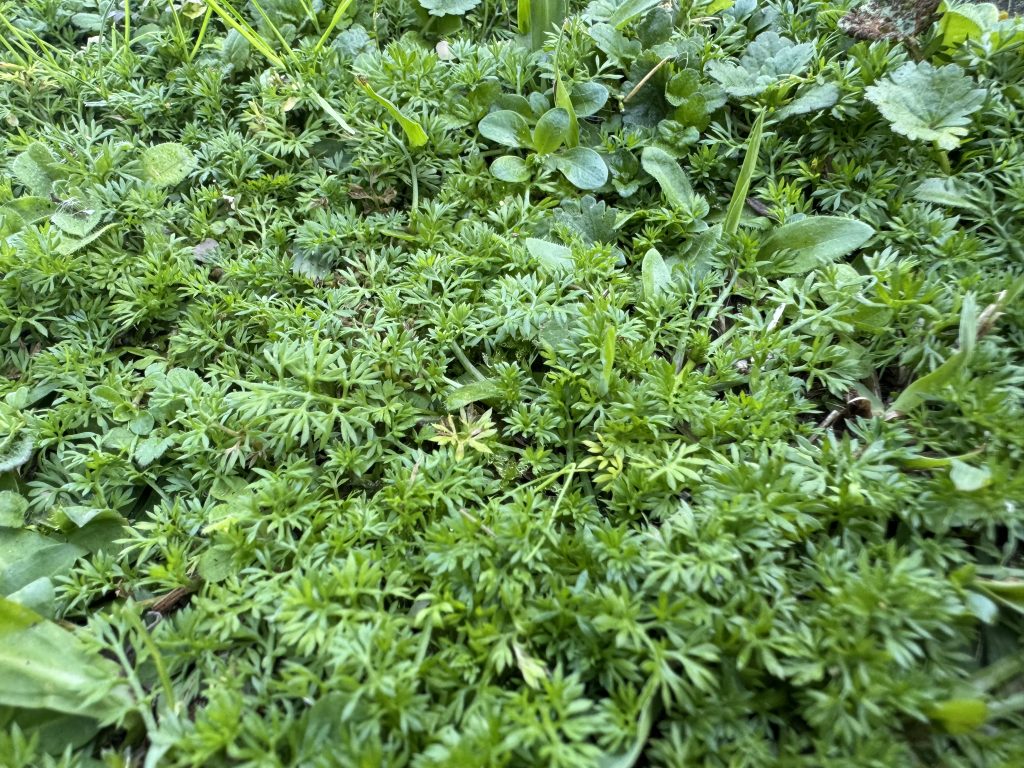How to Get Rid of African Lovegrass in Your Lawn
African Lovegrass (Eragrostis curvula) is a tufted, grassy weed that’s most prevalent in Australian pastures and grazing land, but it can impact home lawns too. Originally ...

Bindii (Soliva sessilis) might be one of the most recognisable and documented weeds in Australian lawns. It can be easily identified, and is likely the cause of some painful childhood memories thanks to its prickly seed pods.
Bindii spreads quickly, but can be effectively managed with popular and readily available post-emergent herbicides like Bow and Arrow or Estate.
A low-growing annual broadleaf weed, Bindii forms a dense, flat rosette of finely divided leaves. The mature plant generates small, spiky burrs that harden and embed in feet, paws and even shoes.
Despite its small size, it can spread rapidly across your lawn if not addressed early.
Bindii is found throughout Australia but is especially common in temperate regions including New South Wales, Victoria, South Australia, parts of Queensland and Western Australia. It thrives in all common warm-season lawn types, including Buffalo, Couch, Bermuda, Kikuyu and Zoysia.

Bindii typically germinates in Autumn, remains inconspicuous through Winter and begins to flower and set seed in early to mid-Spring—right when outdoor activities are ramping up. It spreads via seed and once those burrs are embedded in the lawn, clothing or animal fur, they can be easily transported and deposited elsewhere.
In small infestations or new lawns, manual removal can work if the weed is spotted early in Autumn or Winter before it flowers. Use a weeding tool to lift the plant from the base and remove the entire root. Regular mowing during winter (without scalping the turf) can also help to reduce flowering and seed production, especially in Kikuyu and Buffalo lawns that maintain some winter activity. Couch and Bermuda’s natural tendency to slow growth during this period leaves them more susceptible.
Most post-emergent herbicides on the market will effectively manage Bindii, including popular options like Bow and Arrow or Estate. They’re both safe for all grass types (though Buffalo and QLD Blue Couch might experience slight discolouration for a few days after application), and will usually knock a Bindii outbreak within a week of application.
To ensure efficacy on the first application of any herbicide, it’s recommended to apply in conjunction with a surfactant like Wetter 600 for improved adhesion to the leaf.
When using chemical treatments, always follow manufacturer instructions when it comes to necessary protective equipment and safe re-entry times for humans and animals. Apply on a dry day with minimal wind to prevent drift onto desirable grasses.
A healthy lawn will typically outcompete Bindii very easily, so a natural preventative strategy would be keeping your lawn as healthy and lush as possible. Vinegar and salt-based remedies, or scalding the leaf with boiling water, is unlikely to do anything more than kill the foliage, allowing the plant to grow back from the root system.
To prevent Bindii from returning, applying a high-quality pre-emergent herbicide is a proactive solution. Pre-emergents work by creating a barrier in the soil that inhibits seed germination, effectively stopping weeds before they establish.
A good pre-emergent herbicide, such as those containing Prodiamine (such as Spartan in liquid form, or Onset GR in granular form) or Oxadiazon (like Echelon Duo or Oxafert), offers up to six months of protection against a broad range of invasive weeds.
This long-term approach not only reduces the need for repeated manual or chemical interventions but also contributes to a healthier, more resilient lawn with less pressure from invasive weeds.
Whether you’re looking for a quality pre-emergent to minimise the risk of Bindii invading your much-loved lawn, or you need a post-emergent herbicide to control a Bindii outbreak, you’ll find all the supplements and chemicals you need to keep your grass in top shape at the myhomeTURF Online Shop; home to hundreds of market-leading products that ship Australia-wide.